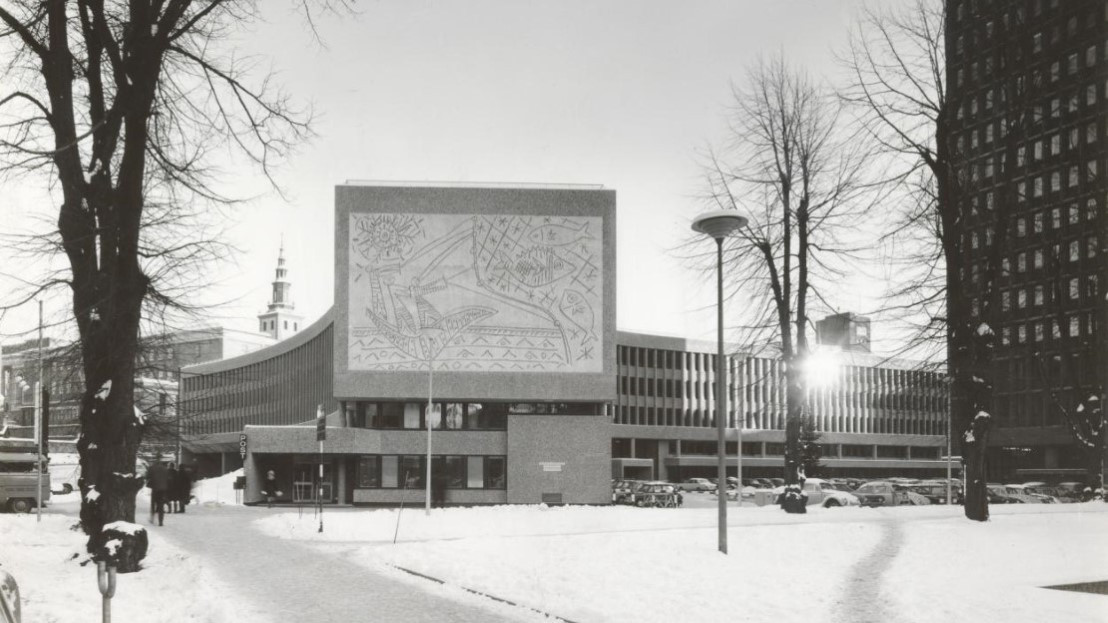Erling Viksjø
This past year, the debate about the so-called Y-Block (1969) in Oslo, currently threatened with demolition, has grown steadily more intense. Why? For one thing, the building is a unique example of sculptural architecture. And for another, this spectacularly beautiful structure represents the highpoint of Erling Viksjø’s collaboration with Pablo Picasso.
A Human Modernism
For Viksjø, art was an important element in architecture. In the 1950s, he began to develop new forms of collaboration with engineers, materials experts and artists. This exhibition throws light on Viksjø’s interaction with artists such as Kai Fjell, Tore Haaland, Ramon Isern, Carl Nesjar, Pablo Picasso, Hannah Ryggen, Inger Sitter, Odd Tandberg and Jakob Weidemann.
These collaborations began with Bakkehaugen Church in Oslo, for which Hannah Ryggen was approached to create a series of tapestries. When it became clear that Ryggen could not complete the commission, it was taken over by Kai Fjell. Later, both Fjell and Ryggen contributed works to the buildings in Oslo’s Government Quarter. Four other radical young artists were engaged to create works in the natural concrete that Viksjø had recently developed. Their work helped to change the understanding of integrated art in Norway. In addition, this was the site of the first collaboration with Picasso, as executed by Carl Nesjar.
Exploration continued on how to approach architecture and art as a unified whole. Viksjø and the artists represented an original, refined and more relaxed alternative to the stricter forms of modernism. The exhibition highlights in particular the experiments with conglomerate concrete that Viksjø conducted over many years together with Odd Tandberg and which have rarely received the attention they deserve.
Few people know that Viksjø himself painted. The exhibition shows a new aspect of his creative practice, with a selection of his own paintings.
